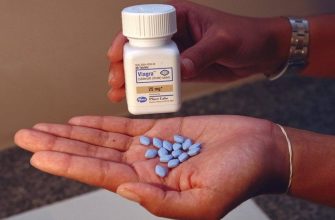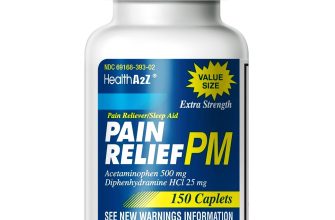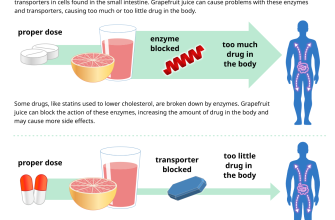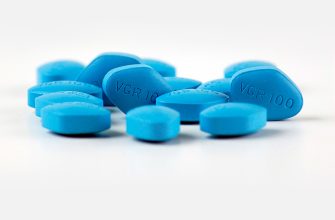Does your dog struggle with constipation? Lactulose can offer relief. This sugar-based laxative gently draws water into the colon, softening stools and promoting regular bowel movements. It’s often a safe and effective option for mild to moderate constipation.
Administer lactulose according to your veterinarian’s instructions. Dosage varies depending on your dog’s weight and the severity of the constipation. Never exceed the recommended dose. Observe your dog for any adverse reactions, such as diarrhea or abdominal discomfort. Contact your vet immediately if you notice anything unusual.
Remember: Lactulose is not a replacement for a proper diagnosis. Underlying medical conditions can cause constipation. Your vet will perform a thorough examination to rule out more serious problems. They will also help you determine if lactulose is the right treatment for your dog’s specific needs. Regular exercise, a balanced diet rich in fiber, and access to fresh water contribute significantly to healthy digestion.
Important Note: Always consult your veterinarian before using lactulose or any other medication for your dog. They can provide personalized advice and ensure the safe and effective use of this treatment option.
- Lactulose for Constipation in Dogs: A Comprehensive Guide
- Understanding Lactulose
- Administering Lactulose Safely
- When to Seek Veterinary Attention
- Alternative Treatments
- Long-Term Management
- Understanding Canine Constipation and its Causes
- Dietary Factors
- Medical Conditions
- Lifestyle and Other Factors
- Signs to Watch For
- How Lactulose Works to Relieve Constipation in Dogs
- Understanding the Mechanism
- Dosage and Administration
- Considerations
- Administering Lactulose to Your Dog Safely and Effectively
- When to Seek Veterinary Attention for Canine Constipation
- Signs Requiring Immediate Veterinary Care
- Other Warning Signs
Lactulose for Constipation in Dogs: A Comprehensive Guide
Always consult your veterinarian before administering lactulose to your dog. Dosage depends on your dog’s weight and the severity of constipation. Your vet will provide personalized recommendations.
Understanding Lactulose
Lactulose is a synthetic sugar that works by drawing water into the colon. This softens the stool, making it easier to pass. It’s generally safe, but potential side effects include gas and diarrhea.
- Mechanism of Action: Lactulose acts as a prebiotic, feeding beneficial gut bacteria.
- Onset of Action: Expect results within 12-24 hours, but it might take longer.
- Administration: Lactulose is usually given orally, often mixed with food to mask the taste.
Administering Lactulose Safely
- Follow Veterinary Instructions: Strictly adhere to your vet’s prescribed dosage and frequency.
- Monitor Your Dog: Observe your dog for any changes in bowel movements and overall health. Report any unusual symptoms to your vet immediately.
- Hydration is Key: Ensure your dog drinks plenty of water, especially while on lactulose.
- Dietary Considerations: Discuss dietary changes with your vet. Some foods can worsen constipation.
When to Seek Veterinary Attention
Contact your vet immediately if your dog experiences:
- Severe diarrhea
- Vomiting
- Lethargy
- No improvement in constipation after several days of treatment
Alternative Treatments
Lactulose isn’t the only solution for canine constipation. Your vet might recommend other treatments such as fiber supplements, enemas, or manual stool removal depending on the cause and severity of the problem.
Long-Term Management
Addressing underlying causes of constipation is crucial for long-term management. This often involves diet modifications, increased exercise, and addressing potential medical conditions.
Understanding Canine Constipation and its Causes
Constipation in dogs means infrequent or difficult bowel movements. A dog is considered constipated if they haven’t produced a stool in 24-72 hours, depending on their normal habits. This can manifest as straining during defecation, small hard stools, or even no stool at all. Several factors contribute to this condition.
Dietary Factors
Insufficient fiber in the diet is a common cause. Dry kibble, especially, can lead to harder stools. Insufficient water intake also hardens stool, making elimination challenging. Sudden dietary changes can also upset a dog’s digestive system, potentially leading to constipation. Consider adding fiber supplements to their diet or switching to a higher fiber food.
Medical Conditions
Certain medical conditions directly impact bowel function. These include megacolon (enlarged colon), hypothyroidism (underactive thyroid), and spinal cord injuries that affect nerve signals to the intestines. Anal gland problems, such as impaction, can also cause difficulty with defecation. If constipation is persistent, veterinary examination is crucial to rule out underlying health issues.
Lifestyle and Other Factors
Lack of exercise reduces intestinal motility, making it harder to pass stool. Dehydration, often linked to insufficient water intake, worsens constipation. Certain medications, such as pain relievers, can have constipation as a side effect. Stress can also affect digestive processes and contribute to bowel problems.
Signs to Watch For
Beyond infrequent bowel movements, observe your dog for lethargy, loss of appetite, abdominal pain (manifested by vocalization or a hunched posture), and vomiting. These symptoms warrant immediate veterinary attention.
How Lactulose Works to Relieve Constipation in Dogs
Lactulose draws water into the colon. This softens the stool, making it easier to pass. It achieves this by acting as a prebiotic, feeding beneficial bacteria in the gut. Increased bacterial activity produces short-chain fatty acids, further drawing water into the colon and stimulating bowel movements.
Understanding the Mechanism
The process is relatively straightforward: Lactulose, a synthetic sugar, isn’t fully absorbed in the small intestine. It reaches the large intestine where gut bacteria metabolize it. This bacterial fermentation results in increased osmotic pressure, pulling water from the surrounding tissues into the colon. The resulting softer, bulkier stool is easier for your dog to eliminate.
Dosage and Administration
Always consult your veterinarian before administering lactulose to your dog. Dosage depends on factors like your dog’s size and the severity of constipation. Your vet will provide specific instructions, but it’s often administered orally, mixed with food or directly into the mouth. Closely monitor your dog’s response and report any adverse effects to your veterinarian immediately.
Considerations
While generally safe, lactulose can have side effects, including diarrhea if given in excessive amounts. Dogs with pre-existing conditions, such as liver disease, may require adjusted dosages or alternative treatments. Remember, lactulose is a treatment for constipation, not a preventative measure. Addressing underlying causes of constipation is crucial for long-term gut health.
Administering Lactulose to Your Dog Safely and Effectively
Always follow your veterinarian’s instructions precisely. Dosage depends on your dog’s weight and the severity of constipation. Typically, lactulose is given orally, using a syringe or mixing it with a small amount of food your dog enjoys.
Never exceed the recommended dose. Overdosing can cause diarrhea and other digestive upset. Observe your dog for any adverse reactions, such as vomiting or unusual changes in bowel movements.
Monitor your dog’s stool consistency after starting lactulose. You should see softer stools within 12-24 hours. If you don’t notice a change, contact your vet. Consistent use may be necessary for chronic constipation.
Store lactulose according to the label instructions. Keep it out of reach of children and pets, except for the prescribed amount for your dog. Proper storage preserves the medicine’s potency.
Lactulose is a stool softener, not a laxative. It works by drawing water into the stool, making it easier to pass. It doesn’t stimulate bowel contractions like some stronger laxatives.
Consult your veterinarian before using lactulose, especially if your dog has other health conditions like kidney disease or liver problems. They can help determine if lactulose is the right treatment for your dog and what the correct dosage should be.
If constipation persists despite using lactulose, consult your vet to rule out underlying medical issues. They may recommend additional tests or different treatments.
When to Seek Veterinary Attention for Canine Constipation
If your dog hasn’t defecated in 24-48 hours, contact your veterinarian. This timeframe is a general guideline; some breeds and individuals have naturally less frequent bowel movements. However, prolonged absence of bowel movements warrants attention.
Signs Requiring Immediate Veterinary Care
Straining excessively during defecation, even with little or no stool produced, needs immediate veterinary assessment. This suggests a significant blockage or other serious underlying issue. Vomiting alongside constipation is another serious red flag, possibly indicating a bowel obstruction. Lethargy, loss of appetite, or abdominal swelling can also signal a more complex problem needing prompt veterinary intervention. Observe for these additional symptoms.
Other Warning Signs
Hard, dry stools indicate dehydration and may require more aggressive intervention than simply using lactulose. Similarly, blood in the stool or changes in bowel habits, such as a sudden onset of constipation after a period of normal bowel movements, need veterinary evaluation. Finally, if home remedies like lactulose aren’t providing relief within 2-3 days, schedule a veterinary appointment.







